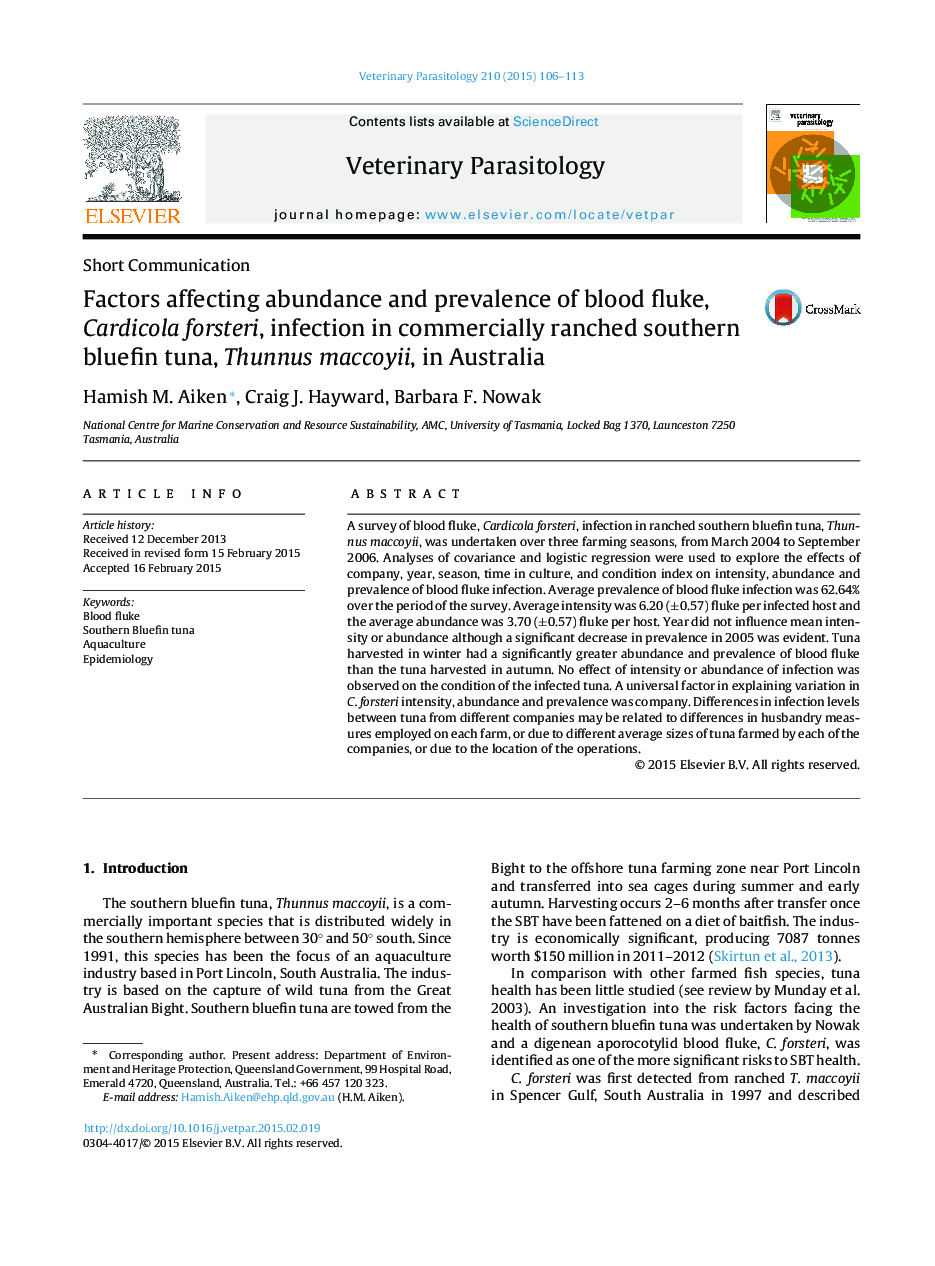| Article ID | Journal | Published Year | Pages | File Type |
|---|---|---|---|---|
| 5802649 | Veterinary Parasitology | 2015 | 8 Pages |
â¢Prevalence of Cardicola forsteri was high (62.64%) in farmed Thunnus maccoyii.â¢T. maccoyiii harvested later in the growing season had higher burdens and prevalence of C. forsteri than earlier in the growing season.â¢Variation in C. forsteri intensity, abundance and prevalence was influenced by the company farming T. maccoyii.
A survey of blood fluke, Cardicola forsteri, infection in ranched southern bluefin tuna, Thunnus maccoyii, was undertaken over three farming seasons, from March 2004 to September 2006. Analyses of covariance and logistic regression were used to explore the effects of company, year, season, time in culture, and condition index on intensity, abundance and prevalence of blood fluke infection. Average prevalence of blood fluke infection was 62.64% over the period of the survey. Average intensity was 6.20 (±0.57) fluke per infected host and the average abundance was 3.70 (±0.57) fluke per host. Year did not influence mean intensity or abundance although a significant decrease in prevalence in 2005 was evident. Tuna harvested in winter had a significantly greater abundance and prevalence of blood fluke than the tuna harvested in autumn. No effect of intensity or abundance of infection was observed on the condition of the infected tuna. A universal factor in explaining variation in C. forsteri intensity, abundance and prevalence was company. Differences in infection levels between tuna from different companies may be related to differences in husbandry measures employed on each farm, or due to different average sizes of tuna farmed by each of the companies, or due to the location of the operations.
